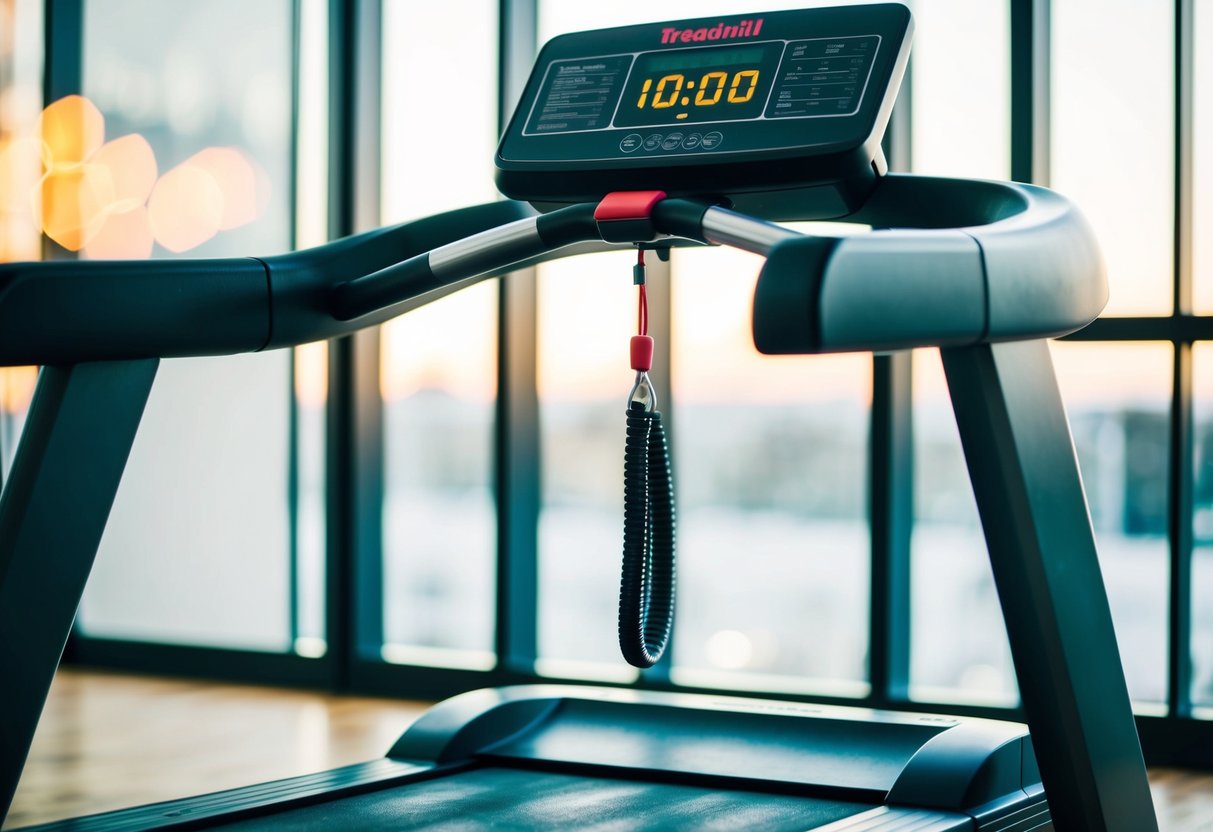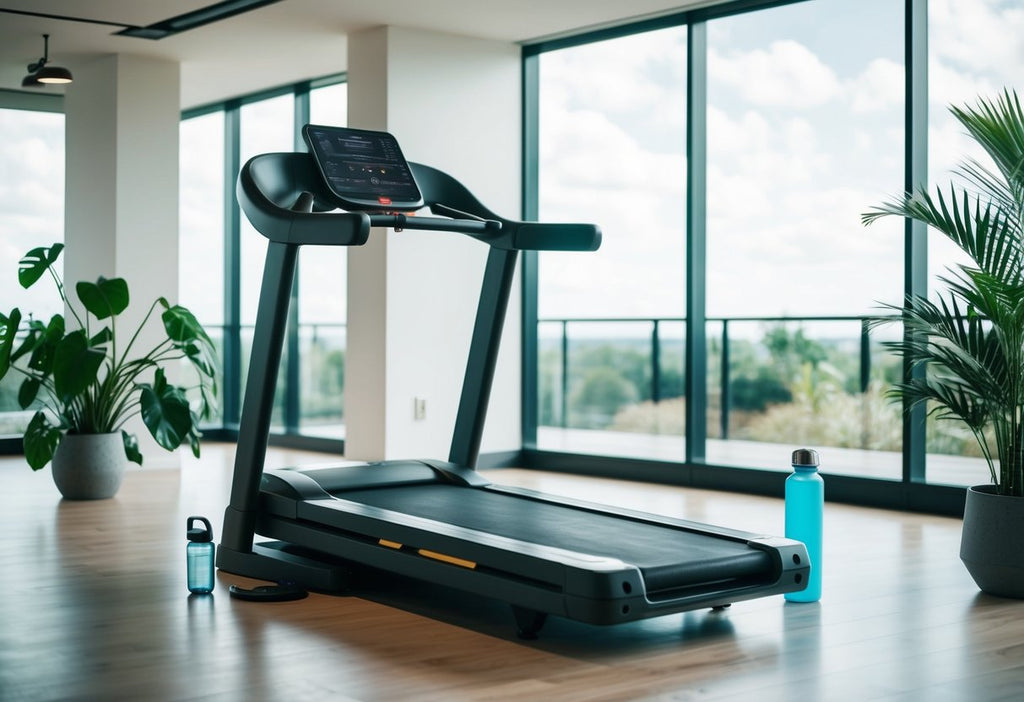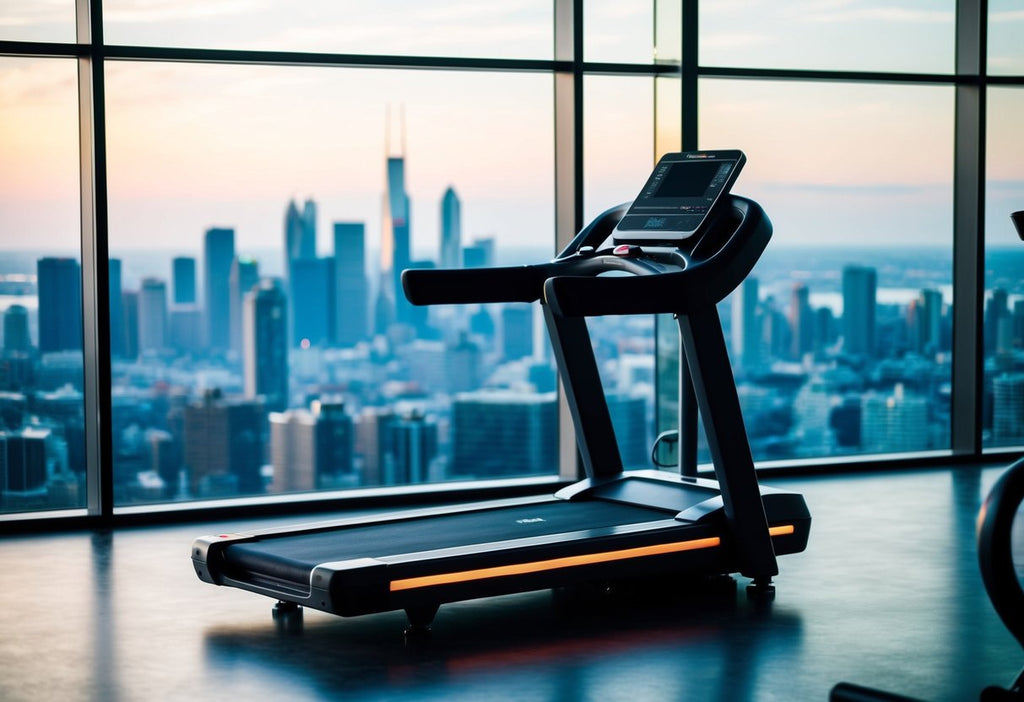How Long Does It Take to Walk 10K Steps on a Treadmill

Don’t forget to check out our Pacerocker, Trailviber, and Trailviber Auto Incline walking pad treadmills.
Walking 10,000 steps is a goal many of us aim to achieve each day for better health. It’s a number that pops up often when talking about fitness and activity. But how long does it actually take to walk 10,000 steps on a treadmill? On average, walking 10,000 steps on a treadmill takes about 90 minutes to 2 hours, depending on your speed and stride length.
When we use a treadmill, we have control over speed and incline, which affects how long it takes to reach those steps. For some of us, it might take less time if we're walking briskly, while a slower pace will naturally take longer. It’s useful to know how much time we need to set aside in our busy schedules.
Exploring different speeds and settings can make treadmill walking enjoyable and engaging. By adjusting these factors, we not only work towards our fitness goals but also enhance our overall well-being.
Key Takeaways
- Walking 10,000 steps on a treadmill takes about 90 minutes to 2 hours.
- Speed and incline settings can change how long it takes.
- Treadmill workouts contribute to a healthy lifestyle.
Understanding 10,000 Steps
Reaching 10,000 steps a day is a popular fitness goal. It serves as a benchmark for maintaining physical activity and improving our health. Let's explore what 10,000 steps mean and where this idea comes from.
What Does 10,000 Steps Represent
Walking 10,000 steps is about five miles for most people. This step count is considered a good indicator of an active lifestyle. It encourages us to move more, which is crucial for health.
Increasing our daily steps to 10,000 can help with cardiovascular fitness, muscle strength, and mental health. It's a simple way to gauge our activity level and see if we are getting enough exercise each day. This goal is flexible and can be adapted based on fitness levels and personal needs.
Reaching this number might seem daunting, but breaking it into smaller, achievable sessions can make it easier. A short walk before work, during lunch, or after dinner helps us reach our daily target without feeling overwhelmed.
The Origin of the Step Goal
The concept of 10,000 steps a day originated from Japan in the 1960s. It started as a marketing campaign for a new pedometer called the "Manpo-kei," which means "10,000-step meter." This figure wasn't based on research, but it quickly became popular as a health goal.
The idea stuck because it's simple to understand and easy to communicate. Walking 10,000 steps a day gained global recognition through fitness trackers and step-counting apps. These tools encourage us to set and reach new goals, making physical activity a part of our daily routine.
While the origins of this goal were marketing-driven, the benefits of increased activity levels are widely recognized. 10,000 steps remind us to move more, helping maintain a healthy lifestyle.
Benefits of Treadmill Walking
Treadmill walking offers several health benefits. It boosts heart health, helps manage weight, and improves mental well-being. Let’s explore these benefits further.
Cardiovascular Health
Walking regularly on a treadmill is great for our heart. It helps improve cardiovascular health by getting our heart rate up and making our heart and lungs work better. This can lead to a lower risk of heart disease.
Treadmill walking allows us to control the speed and incline, which makes it easy to find a comfortable pace. As we continue to walk, we strengthen the heart and improve blood circulation. This can also help lower blood pressure.
Weight Management
Using a treadmill for walking can help us manage our weight in an effective way. When we walk briskly, we burn calories, which is essential for weight loss and maintaining a healthy weight. Walking on a treadmill regularly can also boost our metabolism.
We can adjust the intensity by changing the speed or incline. This not only keeps the exercise fun but also challenges our body. With regular treadmill sessions, we can effectively manage our weight and see gradual results over time.
Mental Health Benefits
Walking on a treadmill can boost our mental health, too. Physical activity like treadmill walking releases endorphins, which are natural mood lifters. This helps reduce feelings of stress and anxiety, making us feel calmer and happier.
When we walk, especially at a moderate pace, we also have the chance to clear our minds. Regular walking can help improve sleep patterns, enhance focus, and increase energy levels. By incorporating treadmill walking into our routine, we can enjoy these mental health benefits.
Setting Up Your Treadmill
To make the most out of walking 10k steps on a treadmill, it's crucial to set it up correctly. We'll look at picking the right incline and fine-tuning the speed for the best walking experience.
Choosing the Right Incline
Incline can make a significant impact on our treadmill workout. By adjusting it, we simulate outdoor conditions. A 1% to 2% incline is often recommended for replicating a brisk walking pace on flat ground.
For a moderate walk, we can increase it further to challenge our muscles. Steeper inclines can intensify the workout, but we should start slowly and adjust gradually to avoid injury. It's important to listen to our body while finding a comfortable and effective incline level for our routines.
Adjusting the Treadmill Speed
Treadmill speed is another vital aspect. Starting at 3 mph provides a comfortable, moderate walk. As we become accustomed, increasing to 4 mph helps maintain a brisk walking pace that many find optimal for exercise.
Using the built-in speed settings, we can manually control or select pre-programmed workouts. These typically offer varied speeds automatically. If we focus on our fitness goals, we adjust the treadmill speed as needed for an effective and enjoyable workout experience.
Tracking Progress
Staying on track with our step goals is crucial for improving our fitness. Using tools like fitness trackers and pedometers makes it easier to monitor our progress and keep motivated.
Using Fitness Trackers
Fitness trackers are smart devices that help us monitor our daily steps and more. They sync with walking apps to display real-time data. These devices provide detailed insights, including distance walked, calories burned, and activity time. Most fitness trackers have GPS, allowing us to view our route, making it more engaging.
The advantage of using a fitness tracker is it can vibrate or send alerts when we reach our step goal. This feature keeps us motivated and eager to hit our targets. Plus, some trackers offer rewards or badges for reaching milestones. This gamification element adds a fun aspect to our walking routine.
Step Counters and Pedometers
Pedometers and step counters are simple tools but very effective. These devices count the number of steps we take, helping us keep track of our activity levels. Unlike advanced fitness trackers, pedometers are easy to use and usually clip onto our pants or shoes.
They don’t need charging, so we have one less thing to worry about. Step counters are great for those new to walking more. Often inexpensive, they provide a straightforward way to monitor if we’re meeting our daily step goals. Whether digital or analog, seeing our step count rise can be quite motivating.
Workout Considerations
When planning to walk 10,000 steps on a treadmill, we need to consider our walking pace and the importance of warming up and cooling down. Both aspects play a role in how effectively and safely we can reach our goal.
Determining Your Walking Pace
Our walking pace is key in knowing how long it will take to finish those steps. By adjusting the treadmill speed, we can find a pace that suits us, whether we're beginners or seasoned walkers. A brisk pace lies between 3 to 4 mph, ideal for most adults.
Stride length also affects how quickly we reach 10,000 steps. A shorter stride means more steps, while a longer stride covers more distance with fewer steps. Monitoring both speed and stride length helps us manage our workout time effectively and can also influence calorie burn, allowing us to tailor our sessions to our fitness goals.
Warm-Up and Cool-Down
We can't overlook the importance of warming up before we start. This prepares our muscles, improves flexibility, and reduces injury risks. A good warm-up could be 5 to 10 minutes of slow walking.
Similarly, a cool-down is crucial as it helps our heart rate return to normal gradually and reduces muscle stiffness. After reaching our step goal, it's beneficial to slow down for a few minutes. Stretching post-exercise also enhances flexibility and supports muscle recovery. Both warming up and cooling down contribute to a safer and more effective treadmill workout experience.
Training Guidelines
Walking 10,000 steps on a treadmill requires a blend of consistency and endurance. Whether we're just starting out or pushing our limits, each stage comes with its own challenges and benefits.
Beginner Treadmill Walkers
Starting on a treadmill can feel daunting, but it's a great way to build endurance. We should set realistic fitness goals, like walking for 20-30 minutes each session. A pace of 3-4 mph is comfortable for most beginners.
Consistency is key. Walking three to four times a week helps our bodies adjust. Over time, we can increase our session length or pace. Tracking progress with a step counter or fitness app keeps us motivated.
It's crucial to listen to our bodies. If we feel tired, it's fine to slow down or take a break. Hydration and proper shoes also play important roles in preventing discomfort.
Intermediate Challenges
For those with some experience, intermediate training introduces new elements. Incorporating interval training helps boost cardiovascular health and makes workouts exciting. We can alternate between walking at a brisk pace for a few minutes and a slower pace for recovery.
Strength training complements our treadmill routine. Adding bodyweight exercises like squats or lunges on non-walking days builds lower body strength, aiding in longer walking sessions.
Setting new goals keeps us motivated. We might aim to walk longer distances or increase speed gradually. Consistency remains vital, as regular exercise is essential for continuous improvement.
Advanced Endurance
Advanced walkers focus on enhancing endurance and stamina. Our workouts can include walking at higher inclines or faster paces, simulating outdoor terrains.
We can challenge ourselves by setting goals, such as completing 10,000 steps in a shorter time frame. Including cross-training activities like cycling or swimming diversifies our routines and reduces injury risk.
Rest and recovery are just as important. Ensuring we have rest days and practice good sleep hygiene supports our fitness journey. By combining all these elements, we can reach and surpass our personal bests with dedication and proper planning.
Factors Affecting Walking Time
Walking time on a treadmill can vary based on several key factors including age and fitness level, as well as walking speed. These elements play a significant role in how long it might take to meet a 10k step goal.
Influence of Age and Fitness Level
As we age, our physical abilities often change. For some of us, this might mean walking at a slower pace. Our fitness level also significantly impacts how quickly we achieve 10k steps. Those who regularly exercise may find they walk faster and with greater ease than others.
Health conditions can impact mobility. People with arthritis, for instance, may require more time to walk the same distance. Creating a consistent fitness routine can help improve our endurance and walking speed over time, which in turn reduces walking time on the treadmill.
Impact of Walking Speed on Time
Walking speed is crucial in determining how long it takes to cover 10k steps. A moderate pace is usually about 3 miles per hour, whereas a brisk walk can range from 4 to even 5 miles per hour. Naturally, a faster pace will lead to reaching our step goal sooner.
If we aim to improve our walking time, we can gradually increase our speed during workouts. Monitoring average walking speed and making calculated adjustments is a useful strategy. Incorporating intervals of faster walking can also help boost our overall pace and reduce time spent on the treadmill.
Lifestyle Integration
Walking 10k steps on a treadmill can be part of our daily routine without a huge effort. By considering small changes, we can boost our overall fitness and break a sedentary lifestyle. Each step counts, whether on a treadmill or outside.
Incorporating More Steps into Your Day
Finding ways to integrate more steps can become part of our usual activities. Instead of taking the elevator, let’s take the stairs whenever possible. Even on a treadmill, we can adjust our daily routine to include quick walks. Walking shoes are essential; a good pair can make walking more comfortable and enjoyable.
One simple method is parking farther away from our destinations. It’s amazing how those extra steps add up over the day. Another idea is to take short walking breaks. A five-minute stroll during a break can invigorate us. Gradually adding these small changes can create a big impact on our fitness routine.
Comparing Treadmill to Outdoor Walking
Walking indoors on a treadmill offers convenience, especially during bad weather. It’s easy to monitor our speed and set a leisurely pace. Treadmills are part of many exercise routines, providing a consistent track for walking. They are beneficial for those focusing on steady progress while avoiding outdoor elements.
Outdoor walking connects us with nature. The varied terrain and fresh air contribute to a fulfilling experience. Outdoor settings might encourage us to walk longer distances. It also allows us to include more diverse movements, enhancing our overall fitness. Both options have their perks, and mixing them might be the best approach. Each has unique benefits, so let’s choose what fits our lifestyle best.
Health and Wellness
Walking 10,000 steps on a treadmill can significantly improve our mental and physical health. It boosts mood, reduces anxiety, and enhances sleep quality. Let's explore the specific benefits further.
Improving Sleep and Relaxation
Walking on a treadmill can enhance our sleep quality. Regular physical activity helps us fall asleep faster and enjoy deeper rest. This can lead to us feeling more refreshed. Incorporating a walking routine is an effective way to tackle sleep issues.
Exercise also aids relaxation. As we walk, our bodies release chemicals like endorphins, which promote a sense of well-being. This can help us unwind after a stressful day, making walking a key part of our nighttime routine.
Including regular walks helps address sleep problems and promotes a calming effect on our minds. This makes it a versatile tool for improved sleep and relaxation.
Reducing Anxiety and Depression
Adding a treadmill walk to our day plays a crucial role in reducing anxiety and depression. Exercise like walking leads to the release of endorphins, which are natural mood lifters. This can lead to a more positive outlook and improved mental health.
Walking can also improve our cognitive function by increasing blood flow to the brain. Small, regular walks contribute to clearer thinking and better concentration. These cognitive benefits further support mental health.
The routine offers us a chance to step away from daily stressors, promoting mental clarity and a sense of peace. Walking daily keeps our spirits high and helps manage feelings of anxiety and depression effectively.
Frequently Asked Questions
When it comes to walking on a treadmill, we often wonder how it impacts our fitness and health. From calorie burn to time, let's answer some common questions.
How many calories can I burn walking 10,000 steps on a treadmill?
Calorie burn depends on weight and pace. On average, we might burn around 300 to 500 calories. It’s great for boosting energy and maintaining a healthy weight.
What is the average time required to walk 10,000 steps on a treadmill?
Most people can walk 10,000 steps in about 75 to 100 minutes at a moderate pace. It's important to note that speed and incline can change this time.
Is walking 10,000 steps daily an effective way to lose weight?
Walking 10,000 steps a day helps with weight loss, especially when paired with a balanced diet. It boosts metabolism and burns calories without the need for strenuous exercise.
How does treadmill speed affect the time it takes to reach 10,000 steps?
Faster speeds decrease the time needed to hit 10,000 steps. If we increase the speed or incline, we can reach our step goal quicker.
Can you achieve 10,000 steps in 30 minutes at different treadmill speeds?
Reaching 10,000 steps in 30 minutes is challenging. It requires a very fast pace, nearly running, which is hard to sustain for many of us.
What are the health benefits of consistently walking 10,000 steps on a treadmill?
Walking 10,000 steps regularly enhances cardiovascular health, boosts mood, and helps manage weight. It also promotes strong bones and increases stamina over time.
Learn how long it takes to walk 10K steps on a treadmill, ranging from 90 minutes to 2 hours based on speed and stride, enhancing your fitness journey.







